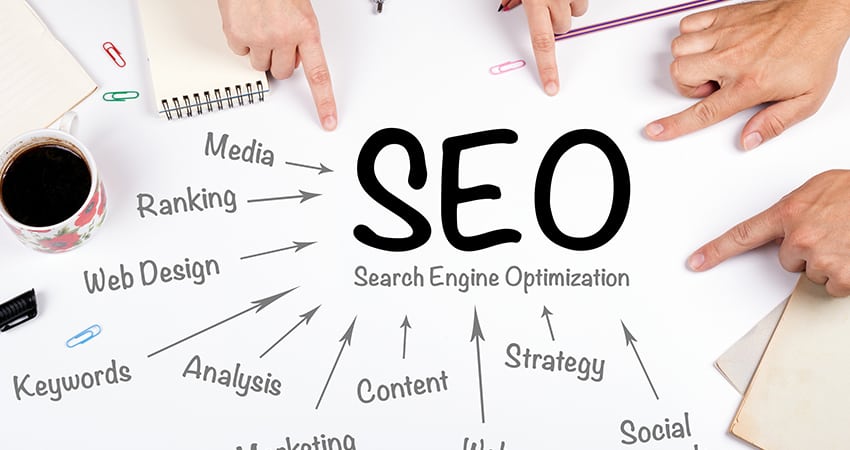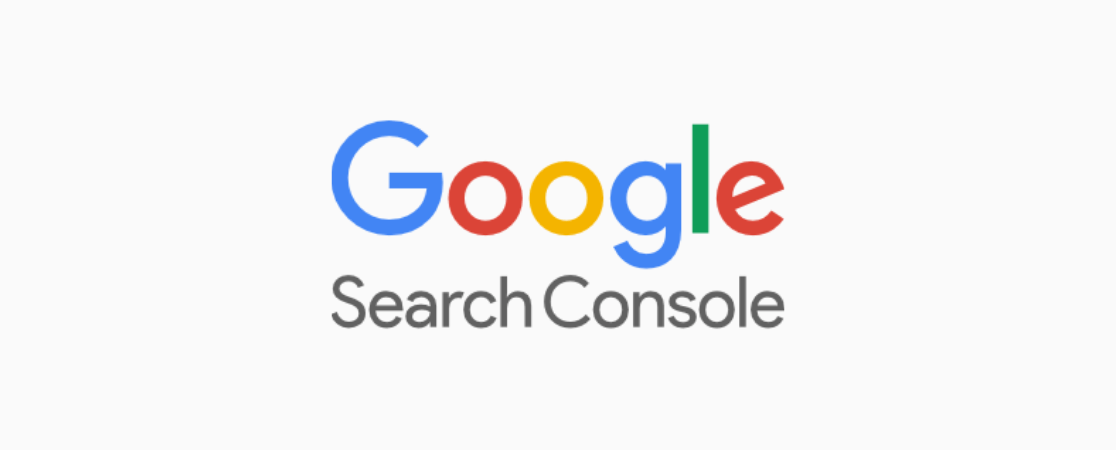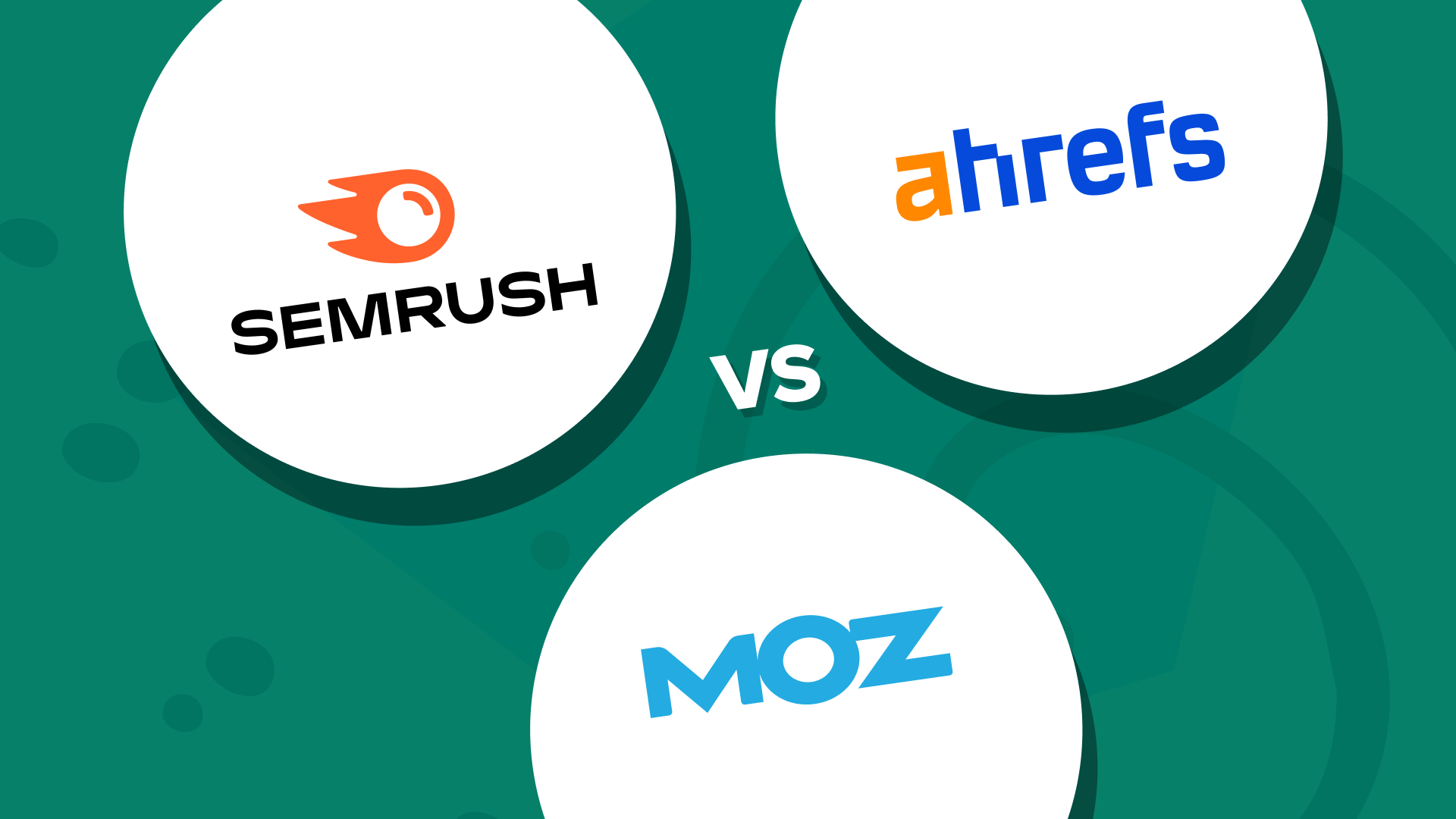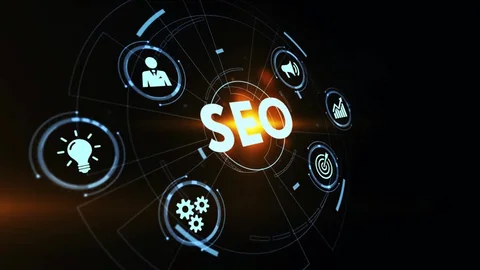-
Introduction
The Relationship Between Webpage Content Searching and SEO
Webpage content searching and SEO (Search Engine Optimization) are deeply interconnected. SEO is optimizing a website’s content to make it more discoverable by search engines like Google, Bing, and Yahoo. Meanwhile, content searching refers to how users navigate through a webpage to find relevant information.
Search engines use complex algorithms to scan, index, and rank web content based on factors such as relevance, keyword usage, user intent, and readability. If a webpage is not structured properly or lacks an efficient search mechanism, users may struggle to find the information they need, leading to a higher bounce rate. A well-optimized webpage ensures that both users and search engines can easily locate relevant content, improving engagement, rankings, and overall website authority.
When search engines analyze a website, they prioritize:
- Keyword Optimization: Ensuring relevant keywords are strategically placed in titles, headings, and body content.
- User Experience (UX): A seamless navigation and search experience keeps users engaged.
- Content Relevance: High-quality, up-to-date, and well-organized content ranks better in search results.
- Internal Search Efficiency: If users can quickly find what they need on a website, it signals to search engines that the website provides value.
By aligning content searching with SEO strategies, websites can enhance user satisfaction and search engine visibility.

Why is Effective Content Searching is Important?
Effective content searching is crucial for both users and website owners. Here’s why:
- Enhances User Experience:
- Users expect to find relevant content quickly. If they struggle, they may leave the site and look elsewhere.
- A well-organized search system improves engagement and retention.
- Boosts SEO Rankings:
- Search engines track how long users stay on a webpage and how they interact with content.
- The website’s ranking may suffer if users leave immediately due to poor searchability.
- Increases Conversion Rates:
- If users can easily find products, services, or information, they are to take desired actions, such as signing up for a newsletter.
- Improves Content Discoverability:
- Even the best content is useless if users and search engines can’t find it.
- Optimizing internal search helps users explore related topics, keeping them engaged longer.
- Supports Voice and AI-Based Search Trends:
- With the rise of voice search and AI-driven content recommendations, effective content searching ensures compatibility with modern search technologies.
In summary, improving content searching on a webpage directly impacts user satisfaction, SEO rankings, and business success. A well-structured website with an intuitive search system can make all the difference in attracting and retaining visitors.
2. Basic Concepts of Webpage Content Searching
Importance of Keywords
Keywords are the foundation of content searching and SEO. They act as the bridge between what users are looking for and the content available on a webpage. Search engines rely on keywords to determine the relevance of a webpage to a user’s query.
Why Are Keywords Important?
- Help Search Engines Understand Content: Search engines scan webpages for relevant keywords to match them with user searches.
- Improve Visibility in Search Results: Proper keyword usage increases the chances of ranking higher in search engine results pages (SERPs).
- Enhance User Experience: When a webpage contains the right keywords, users can easily find relevant information without unnecessary navigation.
- Support Internal Search Functionality: Websites with a well-optimized internal search function use keywords to help users find content faster.
Best Practices for Keyword Usage
- Use Primary Keywords Naturally: Place them in titles, headings, and throughout the content without overstuffing.
- Incorporate Long-Tail Keywords: These are specific phrases (e.g., “best SEO tools for beginners”) that attract targeted traffic.
- Optimize Meta Tags and Descriptions: Keywords in meta titles and descriptions help search engines understand the page’s purpose.
- Use Keywords in URLs and Alt Text: This enhances SEO and improves search accessibility.
Understanding User Intent
User intent refers to the purpose behind a search query. Search engines analyze user intent to deliver the most relevant results. There are three main types of user intent:
1. Informational Intent (Users looking for knowledge)
- Example: “How does content searching affect SEO?”
- Content Needed: Blog posts, guides, and how-to articles.
2. Navigational Intent (Users looking for a specific webpage or brand)
- Example: “Google Search Console login”
- Content Needed: Brand or product-specific pages.
3. Transactional Intent (Users ready to take action)
- Example: “Buy SEO analysis tools online”
- Content Needed: Product pages, service pages, and sign-up forms.

Why Understanding User Intent Matters?
- Improves Content Relevance: Aligning content with user intent increases engagement and reduces bounce rates.
- Enhances Search Engine Ranking: Google prioritizes pages that best satisfy user intent.
- Boosts Conversion Rates: If a webpage delivers what users are looking for, they are more likely to take action.
How Search Engines Read Content
Search engines like Google use complex algorithms to read and rank web page content. This process involves several steps:
1. Crawling
- Search engines send bots (crawlers) to scan web pages and collect information.
- Well-structured pages with straightforward navigation and internal links are easier for crawlers to index.
2. Indexing
- After crawling, the search engine stores and organizes the collected data in its database.
- Pages with high-quality content, relevant keywords, and structured formatting (e.g., headings and bullet points) are indexed faster.
3. Ranking
- Search engines analyze various factors, such as keyword relevance, backlinks, user experience, and page speed, to determine ranking positions in SERPs.
Factors That Help Search Engines Read and Rank Content Efficiently
- Clear and Structured Formatting: Using headings, subheadings, and bullet points makes content easier to scan.
- Internal Linking: This helps search engines understand content relationships and improves navigation.
- Fast Loading Speed: Websites that load quickly are prioritized in search results.
- Mobile-Friendliness: With mobile-first indexing, search engines favor pages that are optimized for mobile devices.
By focusing on these fundamental concepts—keywords, user intent, and search engine readability—websites can optimize their content for both users and search engines, leading to better rankings and higher engagement.
3. Techniques for Content Searching in SEO
Manual Searching vs Automated Searching
Content searching can be done manually or through automated tools, each having its advantages and limitations.
Manual Searching
Manual searching involves human effort to find, analyze, and optimize content. It is often used by SEO professionals to assess search engine results, check competitors’ content, or review internal website search functionalities.
Advantages:
- Allows for detailed analysis and personalization.
- Helps identify nuanced trends that automated tools may overlook.
- Useful for content audits and competitive research.
Limitations:
- Time-consuming and labor-intensive.
- Prone to human error.
- Not scalable for large websites with extensive content.
Automated Searching
Automated searching uses software, tools, and AI-driven systems to scan, retrieve, and analyze webpage content efficiently. Examples include Google Search Console, Ahrefs, SEMrush, and Screaming Frog.
Advantages:
- Faster and more scalable than manual searching.
- Provides comprehensive keyword and ranking analysis.
- Helps in identifying broken links, duplicate content, and optimization opportunities.
Limitations:
- May not always understand the contextual meaning as well as humans.
- Some advanced tools require paid subscriptions.
- Can miss unique, creative elements that manual searches might catch.
Best Approach:
A combination of both manual and automated searching is ideal. Manual searching helps refine strategies based on human intuition, while automation speeds up data collection and analysis.

On-Page Search Optimization
On-page search optimization refers to techniques used within a webpage to enhance searchability and improve rankings.
Key On-Page SEO Techniques:
- Optimizing Titles and Headings:
-
- Use primary and secondary keywords in H1, H2, and H3 tags.
- Keep titles compelling and relevant.
- Improving Meta Tags and Descriptions:
-
- Include target keywords naturally.
- Keep meta descriptions concise (150-160 characters) and informative.
- Enhancing Internal Search Functionality:
-
- Implement an effective search bar with auto-suggestions.
- Use filters to refine search results within the website.
- Optimizing URL Structure:
-
- Keep URLs short, descriptive, and keyword-rich.
- Avoid complex parameters and unnecessary characters.
- Improving Readability:
-
- Use short paragraphs, bullet points, and white space to make content easy to scan.
- Use multimedia elements (images, videos, infographics) to enhance user engagement.
- Boosting Page Speed and Mobile-Friendliness:
-
- Optimize images and use caching techniques.
- Ensure the website is responsive and performs well on all devices.
Effective on-page optimization improves both user experience and search engine rankings, making content more accessible and discoverable.
Using Structured Data for Better Searchability
Structured data, also known as schema markup, helps search engines understand webpage content more effectively. It is a standardized format that provides additional context to search engines about different types of content, such as articles, products, reviews, and events.
Benefits of Structured Data:
- Enhances search engine understanding of content.
- Increases chances of appearing in rich results (featured snippets, knowledge graphs, etc.).
- Improves click-through rates (CTR) by displaying additional information in search results.
Common Types of Structured Data for SEO:
- Article Schema: Helps search engines categorize and display articles effectively.
- Product Schema: Provides details about products, including price, availability, and reviews.
- FAQ Schema: Highlights frequently asked questions within search results.
- Breadcrumbs Schema: Improves navigation and helps users understand page hierarchy.
- Event Schema: Displays event details like dates, locations, and ticket information.
How to Implement Structured Data?
- Use Google’s Structured Data Markup Helper to generate schema markup.
- Add JSON-LD code (a preferred format) to the webpage’s HTML.
- Test using Google’s Rich Results Test to ensure proper implementation.
By utilizing structured data, websites can improve their search visibility and provide users with more relevant and useful search results.
By integrating manual and automated searching, optimizing on-page elements, and implementing structured data, websites can significantly improve their content searchability and SEO performance.
4. How to Improve Search Functionality on Webpages?
A well-optimized search functionality on a webpage enhances user experience and helps visitors find relevant content quickly. This, in turn, improves engagement and reduces bounce rates, which positively impacts SEO. Below are key techniques to improve search functionalities on web pages.
Effective Use of Internal Search Bars
An internal search bar allows users to find content within a website, making navigation easier and improving user retention. If not optimized correctly, users may struggle to locate relevant information, leading to frustration and potential site abandonment.
Best Practices for Optimizing Internal Search Bars:
- Make the Search Bar Easily Accessible
-
- Position it at the top of the page or in a prominent area.
- Use a visible search icon or placeholder text (e.g., “Search for articles, products, or topics”).
- Implement Auto-Suggestions and Predictive Search
-
- Provide real-time suggestions as users type queries.
- Use past search data to predict user intent and offer relevant results.
- Enable Full-Text Search Capabilities
-
- Allow users to search for entire phrases instead of just keywords.
- Use natural language processing (NLP) to improve search accuracy.
- Include Synonyms and Alternative Terms
-
- If a user searches for “laptop,” shows results for “notebook” or “portable computer” as well.
- Utilize a thesaurus-based search feature to broaden search results.
- Track and Analyze Search Queries
-
- Use analytics to understand what users frequently search for.
- Identify search terms that return no results and update content accordingly.
An optimized search bar significantly enhances user satisfaction and ensures visitors stay engaged with your content.
Role of Filters and Categorization
Filters and categorization refine search results, making it easier for users to find specific products or information.

How do Filters Improve Search Functionality?
- Narrow Down Search Results: Users can apply filters based on attributes such as date, price, category, or popularity.
- Reduce Search Time: Instead of browsing through a long list of results, filters allow users to find the exact content they need quickly.
- Enhance User Experience: A well-structured filter system reduces frustration and encourages users to explore more.
Best Practices for Implementing Filters and Categorization:
- Use Relevant Filter Options
-
- E-commerce websites can provide filters for brand, price range, size, and customer ratings.
- Blogs and news websites can include filters for date, category, and trending topics.
- Offer Multi-Select and Hierarchical Filters
-
- Allow users to apply multiple filters simultaneously.
- Organize filters into primary and sub-categories to make them more intuitive.
- Ensure Filters Are User-Friendly on Mobile Devices
-
- Use collapsible filter menus to save space on smaller screens.
- Allow users to reset filters easily.
- Use AI-Based Dynamic Filtering
-
- Show the most relevant filters based on user behavior and past searches.
- Auto-adjust filters based on available content (e.g., hide “Out of Stock” items from e-commerce searches).
Well-implemented filters and categorization enhance the efficiency of internal search, helping users find what they need faster.
AI-Based Search Solutions
Artificial intelligence (AI) is revolutionizing search functionality by making it more intelligent, personalized, and efficient. AI-powered search solutions can analyze user intent, understand natural language, and provide highly relevant search results.
Key AI-Driven Search Enhancements:
- Natural Language Processing (NLP)
-
- Allows users to search using conversational language.
- Example: Instead of searching “best laptops 2025,” users can ask, “Which laptop is best for gaming in 2025?”
- Personalized Search Results
-
- AI learns from user behavior to show personalized content.
- Example: An e-commerce website may recommend products based on previous searches or purchases.
- Voice and Visual Search Capabilities
-
- AI enables voice search for hands-free searching.
- Visual search allows users to upload images and find similar content (e.g., Google Lens, Pinterest Lens).
- Predictive Search and Auto-Completion
-
- AI predicts what a user is searching for before they finish typing.
- Improves search speed and efficiency.
- AI-Powered Chatbots for Search Assistance
-
- Chatbots provide instant answers to user queries and guide them to relevant pages.
- Example: A chatbot can help users find specific products, articles, or services without manual searching.

Benefits of AI-Based Search Solutions:
- Faster and More Accurate Results: AI reduces search time by delivering the most relevant results instantly.
- Enhanced User Engagement: Personalized results increase user satisfaction and retention.
- Better SEO Performance: AI-powered searches improve dwell time and reduce bounce rates, positively impacting SEO rankings.
Conclusion
Improving search functionalities on a webpage enhances both user experience and SEO performance.
- Internal search bars should be optimized with auto-suggestions, synonyms, and full-text search.
- Filters and categorization refine search results, making navigation easier for users.
- AI-based search solutions improve search accuracy, personalization, and efficiency.
By implementing these techniques, websites can ensure that users find relevant content quickly, leading to higher engagement and better conversion rates.
-
Advanced Searching Methods for SEO
Advanced searching methods help SEO professionals refine their strategies, enhance content discoverability, and improve rankings. These methods include Google search operators, Natural Language Processing (NLP), and content indexing and crawling optimization.
Using Google Search Operators
Google search operators are special commands that refine search results, making it easier to find specific information. SEO professionals use these operators for competitor analysis, content research, and technical SEO audits.
Common Google Search Operators for SEO
| Operator | Function | Example Query | Use Case |
| site: | Searches within a specific website | site:example.com SEO tips | Finds indexed pages of a website |
| intitle: | Searches for keywords in titles | In title: “Best SEO strategies” | Finds pages with specific keywords in the title |
| inurl: | Searches for keywords in URLs | in URL: blog SEO trends | Identifies URLs containing specific words |
| related: | Finds similar websites | related:moz.com | Discovers competitors |
| cache: | Shows Google’s cached version of a webpage | cache:example.com | Check the last cached version for indexing issues |
| filetype: | Searches for specific file formats | SEO checklist filetype: pdf | Finds PDFs, DOCs, or PPTs related to SEO |
| – (Minus sign) | Excludes a keyword from the search | SEO tips -beginner | Filters out unwanted results |
| “” (Quotation marks) | Searches for exact phrases | “SEO ranking factors 2024” | Finds exact-match content |
| OR | Searches for either of the two terms | SEO strategies OR content marketing | Expands search scope |
How Do Search Operators Help in SEO?
- Competitor Research: Identify competitor pages and backlink sources.
- Content Optimization: Find keyword-rich titles and high-ranking content.
- Technical Audits: Check indexed pages, duplicate content, and crawlability issues.
- Backlink Analysis: Discover link-building opportunities.
Using Google search operators efficiently can save time and improve SEO research accuracy.
Natural Language Processing (NLP) and SEO
Natural Language Processing (NLP) enables search engines to understand human language better, improving the accuracy of search results. Google’s BERT (Bidirectional Encoder Representations from Transformers) algorithm plays a major role in interpreting user intent and delivering relevant content.
How NLP Impacts SEO?
- Better Understanding of Search Queries
- Google analyzes entire sentences rather than just keywords.
- Long-tail keywords and conversational phrases gain more importance.
- Improved Content Relevance
- Content that answers specific user queries ranks higher.
- SEO strategies should focus on semantic SEO (context-based optimization).
- Entity-Based Search Optimization
- Search engines identify key entities (people, places, organizations) to improve ranking accuracy.
- Example: Instead of just recognizing “Apple” as a keyword, Google determines whether the search refers to the company or the fruit.
- Contextual Keyword Optimization
- Synonyms, variations, and related terms improve content ranking.
- Example: Instead of overusing “SEO tips,” using phrases like “search engine optimization strategies” enhances readability and ranking.

How to Optimize Content for NLP?
- Use Conversational Language: Write content as if answering a real question.
- Optimize for Featured Snippets: Structure content in question-answer format.
- Enhance Content with Structured Data: Use schema markup to provide context.
- Focus on Long-Tail Keywords: Align content with how users naturally phrase queries.
By leveraging NLP, websites can rank higher by providing more relevant and user-friendly content.
Content Indexing and Crawling Optimization
For a webpage to appear in search results, search engines must first crawl and index it. Optimizing for efficient crawling and indexing ensures content is discoverable and ranks faster.
How do Search Engines Crawl and Index Content?
- Crawling:
- Search engine bots scan web pages to collect data.
- Internal linking and sitemaps help bots navigate a website efficiently.
- Indexing:
- After crawling, search engines store and organize content in their database.
- Proper use of structured data and keywords improves indexing speed.
Best Practices for Optimizing Content Indexing and Crawling
✅ Optimize Website Structure:
- Use a clear URL hierarchy.
- Ensure all important pages are linked internally.
✅ Submit XML Sitemaps:
- Helps search engines discover and prioritize pages.
- Submit via Google Search Console.
✅ Use Robots.txt to Guide Crawlers:
- Prevent search engines from crawling unnecessary pages (e.g., admin pages, duplicate content).
✅ Improve Page Load Speed:
- Fast-loading websites get crawled and indexed more frequently.
- Use Google PageSpeed Insights to analyze performance.
✅ Ensure Mobile-Friendliness:
- Google prioritizes mobile-first indexing.
- Use responsive design to enhance mobile usability.
✅ Fix Broken Links and Redirects:
- 404 errors and excessive redirects waste crawl budget.
- Use tools like Screaming Frog to identify broken links.
✅ Leverage Canonical Tags:
- Prevents duplicate content issues.
- Tells search engines which version of a page to prioritize.
✅ Use Structured Data Markup:
- Enhances search engine understanding of content.
- Increases chances of appearing in rich snippets.

By implementing advanced searching methods, SEO professionals can improve their content strategy and enhance discoverability.
- Google Search Operators refine searches and improve SEO audits.
- NLP (Natural Language Processing) helps content align with search engine algorithms and user intent.
- Indexing and Crawling Optimization ensures webpages are properly discovered and ranked by search engines.
A combination of these strategies will lead to better SEO performance, improved rankings, and higher organic traffic.
-
Best Practices for SEO and User Experience (UX)
Search engine optimization (SEO) and user experience (UX) go hand in hand. A well-optimized website not only ranks higher on search engines but also ensures that users can navigate easily and find valuable information. Below are some best practices that help improve both SEO and UX.
Mobile Optimization
With mobile-first indexing, Google primarily considers the mobile version of a site for ranking. Websites that aren’t optimized for mobile lose rankings and traffic. Mobile optimization ensures that content is accessible, user-friendly, and responsive across all devices.
Importance of Mobile-First Indexing
Google introduced mobile-first indexing, meaning it prioritizes the mobile version of a webpage for indexing and ranking. This shift occurred due to the increasing number of mobile users searching the web.
Effects of Poor Mobile Optimization:
- Lower search rankings due to a poor mobile experience.
- Higher bounce rates as users leave non-responsive sites.
- Reduced engagement and conversions.
Responsive Design and Adaptive Layouts
A responsive website adjusts automatically to different screen sizes, ensuring a seamless experience on desktops, tablets, and smartphones.
Key Aspects of a Responsive Website:
- Fluid Grid Layouts: Content scales proportionally based on screen size.
- Flexible Images and Media: Adjusts to fit different screen resolutions.
- Viewport Meta Tag Usage: Helps ensure proper rendering on mobile screens.
For complex websites, adaptive design may be used, where different layouts are served based on device type.
Best Practices for Mobile SEO
- Ensure Fast Loading Speed on Mobile
- Use Google’s Mobile-Friendly Test to check compatibility.
- Compress images and use a content delivery network (CDN).
- Reduce server response times and enable browser caching.
- Use Mobile-Friendly Navigation
- Implement hamburger menus for easy navigation.
- Keep touch elements (buttons, links) large enough to tap easily.
- Optimize Mobile Content
- Use short paragraphs and bullet points for readability.
- Ensure fonts are legible on smaller screens.
- Enable Accelerated Mobile Pages (AMP)
- AMP improves page load times on mobile devices.
- Helps pages rank higher in Google’s Top Stories.
Mobile optimization is essential for both SEO success and user retention.
Impact of Fast-Loading Pages
Website speed is a critical factor for both search engine rankings and user experience. A slow website leads to higher bounce rates and lower engagement.
How Page Speed Affects SEO Rankings?
Google considers page speed as a ranking factor. Fast-loading pages are more likely to appear in top search results.
Effects of Slow Loading Pages:
- Increased bounce rate as users leave before the content loads.
- Lower rankings on Google Core Web Vitals assessment.
- Reduced conversion rates, especially for e-commerce sites.
Techniques to Improve Website Loading Speed
- Optimize Images and Media
- Use next-gen image formats like WebP instead of PNG/JPEG.
- Compress images using tools like TinyPNG or ImageOptim.
- Enable Browser Caching
- Store static assets (CSS, JavaScript) in the user’s browser.
- Reduces load times for returning visitors.
- Minimize HTTP Requests
- Combine CSS and JavaScript files.
- Use inline SVGs instead of separate image requests.
- Leverage Content Delivery Networks (CDN)
- Distribute website content across multiple servers.
- Reduces latency by serving content from the closest server.
- Optimize Server Response Time
- Use faster hosting solutions.
- Enable Gzip compression to reduce file sizes.
- Implement Lazy Loading
- Loads images and videos only when they are needed.
- Improves initial page load time.
Fast-loading websites enhance SEO rankings, user engagement, and conversion rates.
Readability and Accessibility
A well-structured website improves readability and accessibility, making it easier for all users, including those with disabilities, to navigate and interact with content.
Importance of Readable and User-Friendly Content
Google prioritizes content that provides clear, concise, and valuable information. Readability impacts:
- Dwell time (how long users stay on a page).
- Bounce rate (how quickly users leave a site).
- User engagement (how much content users interact with).
Implementing Web Accessibility Standards (WCAG)
The Web Content Accessibility Guidelines (WCAG) ensure websites are accessible to people with disabilities.
Key Accessibility Features:
- Use Alt Text for Images
- Helps visually impaired users understand images.
- Improves image SEO for Google Image Search.
- Ensure Proper Color Contrast
- Makes text readable for visually impaired users.
- Use tools like Contrast Checker to test color contrast.
- Provide Keyboard Navigation Support
- Users should be able to navigate without a mouse.
- Add focus indicators for keyboard users.
- Use Descriptive Anchor Text for Links
- Avoid vague link text like “Click here.”
- Use meaningful descriptions like “Download SEO Guide PDF.”
- Enable Text Resizing Without Breaking the Layout
- Allow users to zoom in without affecting readability.

Enhancing User Experience Through Clear Navigation
- Use a Logical Site Structure
- Organize content with hierarchical categories.
- Implement breadcrumb navigation for clarity.
- Optimize Fonts for Readability
- Use at least 16px font size for body text.
- Choose web-safe fonts (e.g., Arial, Roboto, Open Sans).
- Reduce Pop-Ups and Intrusive Ads
- Google penalizes sites with aggressive interstitials.
- Ensure pop-ups don’t block essential content.
Improving readability and accessibility makes content more user-friendly, leading to higher engagement, lower bounce rates, and better SEO rankings.
-
Tools to Enhance Content Searching
To improve content visibility and optimize for search engines, various tools help analyze website performance, keyword effectiveness, and user engagement. These tools offer insights into how content is indexed, ranked, and optimized for SEO. Below are some of the most powerful tools for enhancing content searching.
Google Search Console
Google Search Console (GSC) is a free tool that helps website owners monitor and improve their site’s presence in Google Search results.

Key Features of Google Search Console for SEO
- Performance Analysis
- Tracks clicks, impressions, CTR (click-through rate), and average position of pages.
- Identifies high-performing content and areas that need improvement.
- Indexing and Crawling Insights
- Shows which pages are indexed and highlights indexing errors.
- Allows users to request indexing of new or updated content.
- Search Query Data
- Displays keywords users search for before landing on a website.
- Helps refine keyword strategy for better ranking.
- Core Web Vitals Report
- Measures page speed, interactivity, and visual stability.
- Helps optimize for a better user experience (UX) and SEO performance.
- Mobile Usability Testing
- Identifies mobile-friendliness issues.
- Suggests improvements to enhance mobile search rankings.
- Manual Actions and Security Issues
- Alerts about Google penalties due to spammy content or security vulnerabilities.
- Ensures the website follows Google’s SEO guidelines.
✅ How to Use Google Search Console for Content Searching?
- Identify top-performing pages and optimize content accordingly.
- Find low-ranking but high-impression pages and improve their content.
- Monitor search queries to understand user intent and refine keyword targeting.
SEO Analysis Tools (Ahrefs, SEMrush, Moz)
SEO analysis tools provide in-depth data about keyword rankings, backlinks, competitor analysis, and website health.
Ahrefs
Ahrefs is known for its extensive backlink analysis and keyword research capabilities.
Key Features:
- Site Explorer: Analyzes backlinks and competitor strategies.
- Keyword Explorer: Finds high-ranking keywords and related search terms.
- Content Explorer: Identifies trending topics based on backlinks and social shares.
How Ahrefs Enhances Content Searching:
- Helps identify high-ranking content for specific keywords.
- Traces backlinks to competitor content to improve link-building strategies.
SEMrush
SEMrush is an all-in-one SEO, PPC, and content marketing tool.
Key Features:
- Keyword Magic Tool: Provides keyword suggestions and search volume data.
- Site Audit: Detects technical SEO issues affecting rankings.
- Topic Research Tool: Generates content ideas based on trending searches.
How SEMrush Enhances Content Searching:
- Find low-competition keywords for content optimization.
- Helps analyze SERP (Search Engine Results Page) features for better visibility.
Moz
Moz is widely used for domain authority tracking and SEO audits.
Key Features:
- Moz Keyword Explorer: Finds relevant keywords based on difficulty and opportunity score.
- Link Explorer: Monitors backlinks and their impact on rankings.
- Page Optimization Tool: Provides recommendations for on-page SEO improvements.
How Moz Enhances Content Searching:
- Identifies search trends and content gaps.
- Evaluates page authority to optimize underperforming pages.
✅ How to Choose the Best SEO Analysis Tool?
- For backlink analysis: Ahrefs
- For keyword research and PPC: SEMrush
- For domain authority and site audits: Moz
Using these tools helps refine SEO strategies and enhances content discoverability.

AI-Based Content Optimization Tools
Artificial Intelligence (AI) is transforming content optimization by analyzing search trends, suggesting improvements, and automating keyword placement.
Popular AI-Based SEO Tools
- Surfer SEO
- Uses AI-driven content scoring to suggest keyword placements.
- Analyzes top-ranking pages for content structure recommendations.
- Clear scope
- Helps content writers optimize articles based on high-ranking competitors.
- Provides keyword relevance scores to improve SEO.
- MarketMuse
- Uses AI to analyze content gaps and suggests missing subtopics.
- Improves content structure and internal linking for better ranking.
- Frase
- Generates AI-powered content briefs based on search intent.
- Helps create SEO-friendly summaries to rank higher in featured snippets.
- ChatGPT and AI Writing Assistants
- Helps generate meta descriptions, headlines, and SEO-friendly content.
- Assists in rewriting and improving readability for better engagement.
How AI-Based Tools Enhance Content Searching?
- Automate content audits to identify areas of improvement.
- Suggest keyword optimizations to match user intent.
- Improve readability and engagement for higher search rankings.
✅ Best Practices for Using AI-Based SEO Tools:
- Combine AI tools with manual SEO analysis for better accuracy.
- Use AI to generate outlines and keyword suggestions, but manually refine content.
- Regularly update content based on AI-driven recommendations.
By leveraging Google Search Console, SEO analysis tools, and AI-based content optimization tools, businesses can improve content visibility, keyword targeting, and overall search performance.
-
Common SEO Search Mistakes to Avoid
SEO is a constantly evolving field, and mistakes can negatively impact search rankings and user experience. Many website owners unknowingly make SEO errors that reduce their visibility in search engine results. Below are some of the most common SEO search mistakes and how to avoid them.
Issues with Duplicate Content
Duplicate content refers to identical or highly similar content appearing on multiple pages of a website or across different websites. Search engines struggle to determine which version of the content is most relevant, leading to ranking issues.
Why is Duplicate Content a Problem?
- Keyword Dilution: When multiple pages target the same keywords, they compete with each other, reducing their overall ranking potential.
- Search Engine Confusion: Google may struggle to decide which page to rank, leading to lower visibility.
- Reduced Link Equity: Backlinks may be split across duplicate pages instead of strengthening a single authoritative page.
Common Causes of Duplicate Content:
- URL Variations
- Dynamic URL parameters (e.g., example.com/page?id=123 and example.com/page) create duplicate versions of the same page.
- HTTP vs. HTTPS and www vs. non-www Versions
- If both http://example.com and https://example.com exist without redirection, they are seen as separate pages.
- Similar Product Descriptions on E-Commerce Sites
- Copy-pasting manufacturer descriptions without modification leads to duplicate content across multiple pages.
- Syndicated or Scraped Content
- Republishing content from other websites without proper attribution can lead to SEO penalties.

How to Fix Duplicate Content Issues?
✅ Use Canonical Tags (rel=”canonical”)
- Tell search engines which version of a page is the primary source.
✅ 301 Redirect Duplicate URLs
- Redirect similar pages to a single authoritative URL to consolidate ranking signals.
✅ Use the Noindex Tag Where Necessary
- Prevent search engines from indexing duplicate pages that don’t add value.
✅ Rewrite Similar Content
- Ensure each page has unique and valuable content rather than copying from other pages.
Overuse of Keywords (Keyword Stuffing)
Keyword stuffing is an outdated and harmful SEO practice where too many keywords are unnaturally inserted to manipulate rankings. Google’s algorithms, including Panda and Hummingbird, penalize keyword stuffing, making it essential to focus on natural language and user intent.
How does Keyword Stuffing Affect SEO?
- Penalization by Search Engines: Google may de-rank or remove keyword-stuffed pages from search results.
- Poor User Experience: Content that is unnaturally loaded with keywords is difficult to read and leads to higher bounce rates.
- Lower Engagement Rates: Users are less likely to engage with content that feels robotic and repetitive.
Examples of Keyword Stuffing:
🚫 Unnatural Repetition
“Best SEO tools are important for SEO. If you want the best SEO results, use the best SEO tools for SEO success.”
🚫 Excessive Use of Keywords in Meta Descriptions
“SEO tools, best SEO tools, SEO software, and SEO techniques for SEO ranking improvement.”
How to Avoid Keyword Stuffing?
✅ Use Keywords Naturally
- Integrate keywords into headings, subheadings, and body text in a way that sounds natural.
✅ Focus on Semantic SEO
- Use synonyms and related terms instead of repeating the same keyword multiple times.
✅ Optimize for User Intent
- Answer the user’s search query rather than forcing keywords into the content.
✅ Follow Keyword Density Best Practices
- A keyword density of 1-2% (one keyword per 100-200 words) is recommended for natural content flow.
✅ Use LSI (Latent Semantic Indexing) Keywords
- Instead of repeating “SEO tools,” use related terms like SEO software, keyword research tools, and site audit tools.
Avoiding keyword stuffing ensures is engaging, informative, and ranks well without penalties.
Ignoring Meta Tags and Descriptions
Meta tags and descriptions play a critical role in click-through rates (CTR) and search engine rankings. Many website owners either ignore them or fail to optimize them properly, resulting in lost search traffic.
Why are Meta Tags and Descriptions Important?
- Enhance Click-Through Rate (CTR): A well-crafted meta description encourages users to click on the search result.
- Help Search Engines Understand Content: Meta tags provide essential information about the webpage.
- Impact Search Rankings: Poorly optimized meta tags may lower a page’s visibility in search results.
Common Meta Tag Mistakes and How to Fix Them
🚫 Missing Meta Descriptions
- Without a meta description, Google auto-generates one, which may not be relevant or compelling.
✅ Solution: Write concise and compelling meta descriptions (150-160 characters).
🚫 Duplicate Meta Titles and Descriptions
- Using the same title/meta description across multiple pages confuses search engines.
✅ Solution: Ensure unique meta titles and descriptions for each page.
🚫 Keyword-Stuffed Meta Tags
- Forcing too many keywords into meta tags makes them spammy and unhelpful.
✅ Solution: Use one primary keyword naturally in the title and description.
🚫 Meta Titles That Are Too Long or Too Short
- Titles over 60 characters may get cut off in search results.
✅ Solution: Keep title tags 50-60 characters long.
Best Practices for Writing Effective Meta Tags
- Write a Clear and Engaging Meta Title
- Example:
✅ “10 Best SEO Tools for Boosting Your Website’s Ranking | Expert Guide”
- Example:
- Create a Compelling Meta Description
- Example:
✅ “Discover the best SEO tools to improve your website ranking. Get expert reviews and tips on optimizing your content for search engines.”
- Example:
- Use Action-Oriented Language
- Encourages users to click (e.g., Learn more, Discover, Get started today).
- Include the Target Keyword Naturally
- Avoid overloading it with repetitive keywords.
By optimizing meta tags and descriptions, websites can attract more users, improve CTR, and boost search rankings.
Final Thoughts
Avoiding duplicate content, keyword stuffing, and poor meta-tag optimization is essential for SEO success. By following best practices, websites can improve their search rankings, enhance user experience, and drive more organic traffic.
-
Future Trends in Content Searching & SEO
The landscape of SEO and content searching is rapidly evolving, driven by technological advancements and changing user behaviors. Emerging trends like AI, voice search, and semantic search are reshaping how search engines interpret and rank content. Businesses and content creators must stay ahead of these trends to maintain their search visibility.
The Role of AI and Machine Learning in SEO
Artificial Intelligence (AI) and Machine Learning (ML) have significantly impacted how search engines process and rank content. Google’s AI-based algorithm, RankBrain, was one of the first machine learning models introduced to improve search relevance. Today, AI-driven SEO strategies focus on content quality, search intent, and user engagement.
How AI is Changing Content Searching?
- AI-Powered Search Algorithms
- Google’s BERT (Bidirectional Encoder Representations from Transformers) helps the search engine understand natural language processing (NLP) and search intent.
- The newer MUM (Multitask Unified Model) can process text, images, and videos in multiple languages to deliver more comprehensive search results.
- Automated Content Optimization
- AI tools like Surfer SEO, MarketMuse, and Clearscope analyze competitor content and suggest keyword improvements.
- These tools help structure content for higher relevance and better rankings.
- Predictive Search & Personalization
- AI helps Google predict what users are searching for based on their past behavior and preferences.
- Websites can use AI chatbots and recommendation engines to improve content discoverability.

✅ SEO Strategy for AI-Driven Search
- Focus on high-quality, in-depth content that provides clear answers to user queries.
- Use structured data to help AI better understand content.
- Optimize content for conversational queries and natural language processing (NLP).
Voice Search Optimization
With the rise of smart assistants like Google Assistant, Alexa, and Siri, voice search is becoming a dominant SEO factor. Unlike traditional text searches, voice queries are typically longer, conversational, and question-based.
Why is Voice Search Important for SEO?
- Growing Popularity
- Over 50% of internet searches are conducted via voice search.
- Many users rely on smart speakers and mobile assistants to find information.
- Different Search Behavior
- Text-based searches: “best SEO tools”
- Voice-based searches: “What are the best SEO tools to improve my website ranking?”
- Featured Snippets & Position Zero
- Voice search prioritizes featured snippets, often referred to as Position Zero in Google.
- Optimizing for featured snippets increases the chances of appearing in voice search results.
How to Optimize for Voice Search?
Use Conversational Keywords
- Focus on long-tail keywords and natural language queries.
- Example: Instead of “SEO tools 2025”, use “What are the top SEO tools in 2025?”
Create FAQ Pages
- Voice search often pulls answers from structured FAQ sections.
- Example: “How does Google rank content in 2025?”
Improve Local SEO
- Many voice searches are location-based.
- Optimize for “near me” searches by claiming your Google My Business listing.
Ensure Fast Page Load Speed
- Voice search prefers quick-loading websites with optimized performance.
Voice search will continue to grow, and optimizing for voice queries can significantly improve search visibility.
The Importance of Semantic Search
Semantic search focuses on understanding the context and intent behind search queries, rather than just matching keywords. Google’s algorithms now prioritize meaning over exact words, making content more user-focused.
How Does Semantic Search Work?
- Understanding Search Intent
- Google interprets whether users are looking for informational, navigational, or transactional content.
- Example: “Best smartphones 2025” – Google understands users want comparisons and reviews, not just a list.
- Latent Semantic Indexing (LSI) Keywords
- LSI keywords are contextually related terms that improve content relevance.
- Example: If an article is about “SEO strategies”, related keywords might include: “keyword optimization,” “backlinks,” and “meta tags”.
- Entity-Based Search
- Instead of focusing on individual words, Google recognizes entities (people, places, things).
- Example: “Apple” – Google understands whether the user means the tech company or the fruit based on context.
- Google’s Knowledge Graph
- Google pulls information from multiple sources (Wikipedia, official websites, structured data) to provide comprehensive search results.
How to Optimize for Semantic Search?
✅ Write Content with Clear Search Intent
- Address what users want instead of just inserting keywords.
✅ Use Structured Data (Schema Markup)
- Helps search engines understand the relationships between different topics.
✅ Create Comprehensive, Well-Structured Content
- Cover topics in-depth rather than creating multiple short articles on the same subject.
✅ Include LSI Keywords
- Use related terms naturally instead of keyword stuffing.
Semantic search is shaping the future of SEO by prioritizing relevance, context, and intent over traditional keyword-matching techniques.
As AI, voice search, and semantic search continue to evolve, businesses must adapt their SEO strategies to stay competitive.
- AI-driven SEO will improve content personalization and predictive search.
- Voice search optimization will require conversational and long-tail keywords.
- Semantic search will prioritize content relevance and context over exact keyword matches.
By staying ahead of these trends, websites can increase their search visibility, improve user experience, and remain competitive in the ever-changing SEO landscape.
-
Conclusion
As the digital landscape continues to evolve, effective content searching for SEO remains a crucial factor in achieving better search rankings and improving user experience. Businesses and creators must adapt to modern search techniques, optimize their web pages, and leverage AI-driven solutions to stay competitive.
Summary of Best Practices
Throughout this guide, we have explored key strategies for improving content searching and SEO. Below are the most important takeaways:
✅ Keyword Optimization:
- Use relevant keywords naturally and avoid keyword stuffing.
- Optimize for semantic search by including related terms and synonyms.
✅ User Intent Understanding:
- Structure content based on informational, navigational, or transactional search intent.
- Focus on answering specific user queries with clear and valuable content.
✅ On-Page Search Optimization:
- Utilize internal search bars, categorization, and filters to improve content discovery.
- Implement structured data (Schema Markup) to help search engines better understand page content.
✅ Technical SEO Enhancements:
- Ensure fast page loading speed for better user experience and rankings.
- Optimize content for mobile devices and voice search.
✅ AI and Advanced Search Techniques:
- Use Google search operators and AI-based SEO tools for efficient content discovery.
- Implement natural language processing (NLP) techniques to enhance content relevance.
✅ Avoid Common SEO Mistakes:
- Prevent issues with duplicate content by using canonical tags and 301 redirects.
- Optimize meta titles, descriptions, and alt text for better search engine visibility.
Next Steps for Optimizing Content Search
Moving forward, consider the following steps to further enhance your SEO strategy and content searching capabilities:
- Conduct Regular SEO Audits
- Use tools like Google Search Console, Ahrefs, and SEMrush to identify and fix SEO issues.
- Improve Content Strategy
- Focus on high-quality, long-form content that provides valuable insights.
- Update older content to keep it fresh and relevant.
- Implement AI-Driven SEO Techniques
- Leverage AI-powered tools to optimize keywords, track search trends, and enhance user engagement.
- Optimize for the Future of Search
- Prepare for voice search and mobile-first indexing by adopting conversational content strategies.
- Use structured data and entity-based SEO to improve content discoverability.
- Monitor Performance and Adjust Strategies
- Continuously analyze user behavior and search trends to refine your approach.
- Stay updated with Google’s algorithm changes to maintain a competitive edge.
By following these steps, you can enhance your content’s searchability, improve user engagement, and achieve long-term SEO success.
Stay Connected and Keep Learning!
SEO is constantly evolving, and staying updated with the latest trends and best practices is crucial for success. If you found this guide helpful and want more insights, tips, and updates on SEO, content optimization, and digital marketing, follow us on Facebook! Join our community, ask questions, and stay ahead in the world of search engine optimization.


